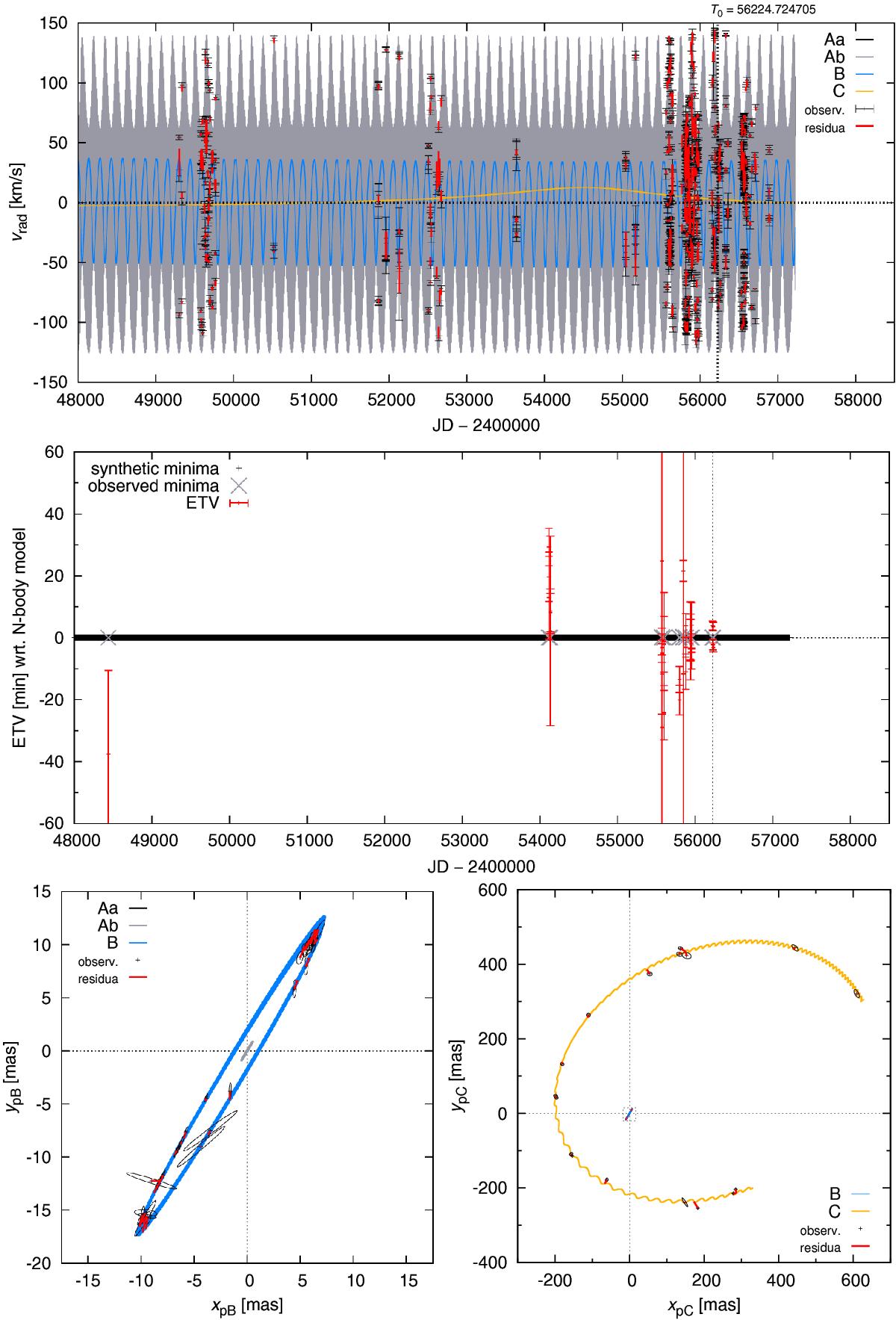Fig. 9

One of the best-fit solutions for the ξ Tau system with our N-body model and using all available observational data. In this case, the resulting total χ2 is 2578, while the number of degrees of freedom ν = 908. Top: radial velocities vzbAa, vzbAb, vzbB, vzbC of the individual components; model values are denoted by lines (component Aa is black, not clearly visible, Ab grey, B blue, and C orange), observations by black error bars and residuals by thick red lines. Middle: O−C values for both primary and secondary minima timings; model timings are denoted by black points (very densely packed), observations by grey crosses, and O−C with its uncertainty by red error bars. Bottom left: astrometric positions of component B based on NPOI interferometric observations; model orbit xpB, ypB with respect to photocentre Aa+Ab (i.e. not w.r.t. B, as usually) is again denoted by a blue line, observations by black error bars and residuals by thick red lines. The orbit is not a single ellipse, but rather a complex trajectory that quickly precesses and is moreover affected by (slight) photocentre motions. Bottom right: similarly, astrometric positions of the distant component C xpC, ypC with respect to the Aa+Ab+B photocentre is denoted by an orange line. Component B is relatively luminous, which makes the orbit in these photocentric coordinates slightly jagged.
Current usage metrics show cumulative count of Article Views (full-text article views including HTML views, PDF and ePub downloads, according to the available data) and Abstracts Views on Vision4Press platform.
Data correspond to usage on the plateform after 2015. The current usage metrics is available 48-96 hours after online publication and is updated daily on week days.
Initial download of the metrics may take a while.




